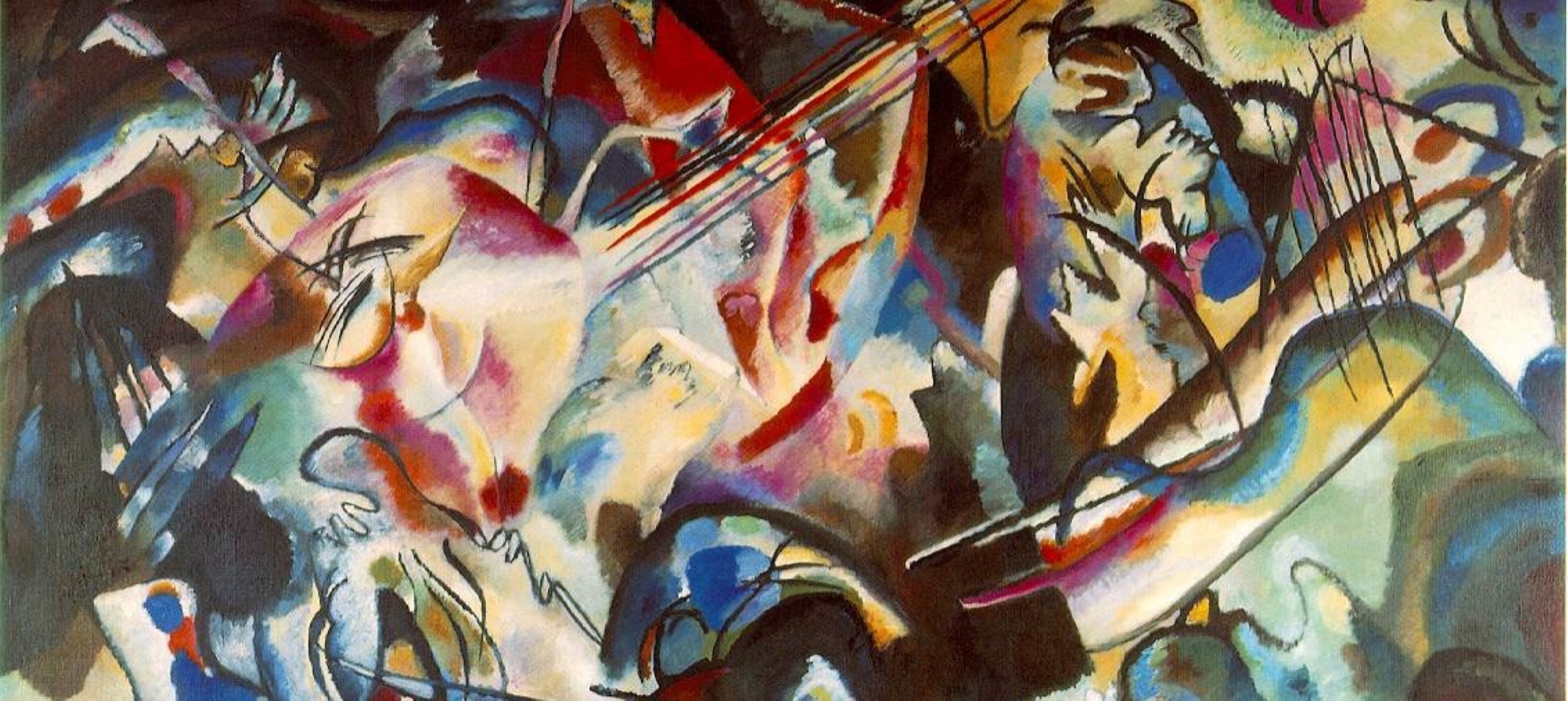
The art of abstraction: The influence of Wassily Kandinsky on contemporary artists
The art of abstraction is something that influenced artists of the whole 20th century and still inspires artists of the 21st century. But have you ever questioned who was at the roots of this movement and how it was created?
Abstractionism is one of the main artistic movements of the 20th century. Russian artist Wassily Kandinsky (1866-1944) was one of its most outstanding creators who outlined the main provisions of this movement in theoretical works and artistic statements. His theory and art became the basis and inspiration for many artists of the 20th century and current artists.
Early life and artistic journey of Wassily Kandinsky
Wassily Kandinsky was born in Moscow to a wealthy family of a merchant. Since early childhood, his parents had always supported his interest in art, but they still saw their son in a serious profession, as a lawyer. That is why Kandinsky graduated from the University of Moscow in the field of law and economics and continued his career path as a professor.
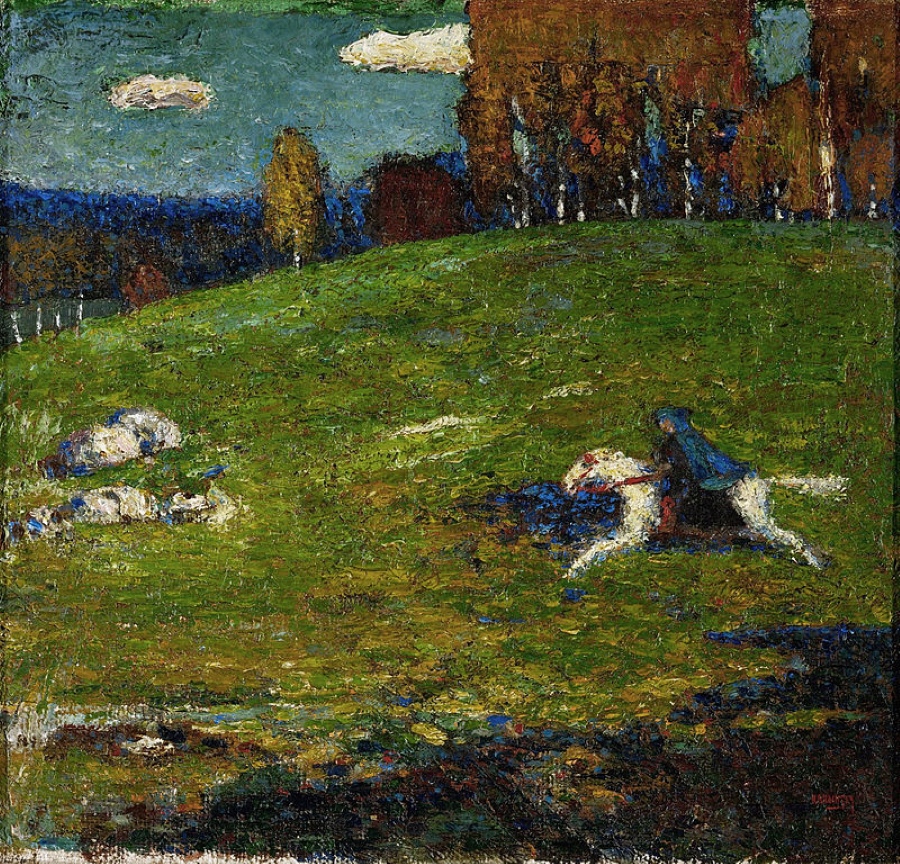 The Blue Rider by Wassily Kandinsky, 1903
The Blue Rider by Wassily Kandinsky, 1903Nevertheless, his early interest in art did not come without a trace. In 1895 Kandinsky attended the exhibition of French impressionists in Moscow and was astonished by the ‘Haystacks’ by Claude Monet (1840-1926). The second experience that shocked the artist's feelings happened during Wagner's opera ‘Lohengrin’ at the Moscow Bolshoi Theater. The artist was imperiously captured by sounds he had never heard before:
... in my mind, I saw all my colours, they stood before my eyes. Frenzied, almost insane lines were drawn in front of me.
After a while, inspired by these experiences, Kandinsky left university to study art in Munich which was at the time, the centre of European art. The relations of colour and sound, music and painting, existing not only at the level of concepts but also in reality, absorbed him to such an extent that this secret relationship of the arts became the basis of his artistic beliefs, the starting point for his painting.
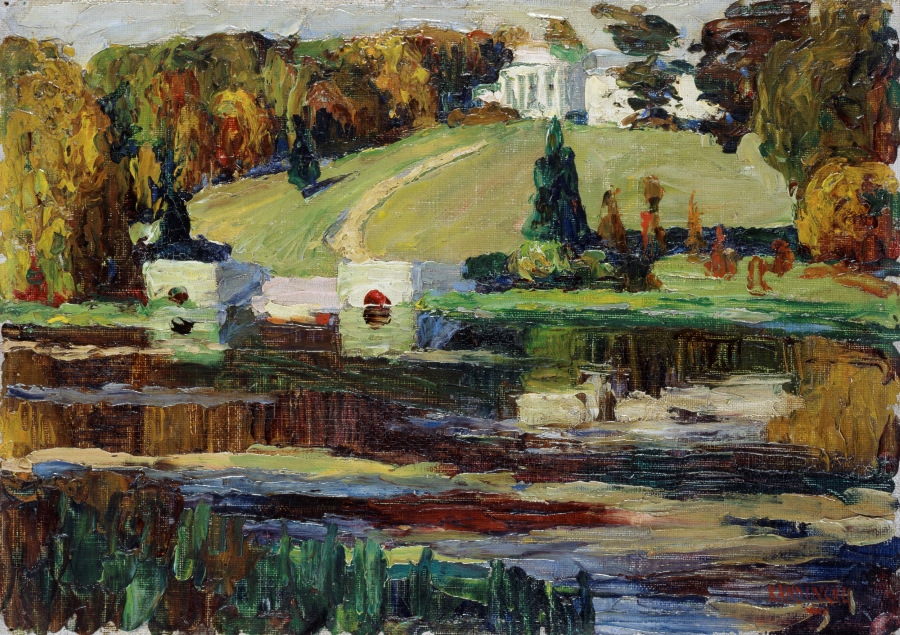 Akhtyrka, Autumn by Wassily Kandinsky, 1901
Akhtyrka, Autumn by Wassily Kandinsky, 1901Kandinsky started his artistic studies in a prestigious private school of Slovene realist painter Anton Ažbe (1862-1905) where he was immersed in creative activities. Later he became the scholar of the famous painter Franz von Stuck (1863-1928) who was the main German artist at this time.
His views at this time were formed by various sources. One of the most influential was the theosophy of Madame Blavatsky (1831-1891) whose theory related to the creation of the world from the geometrical progression became the basis of Kandinsky’s future works with geometric forms.
Kandinsky’s pioneering theories on abstract art
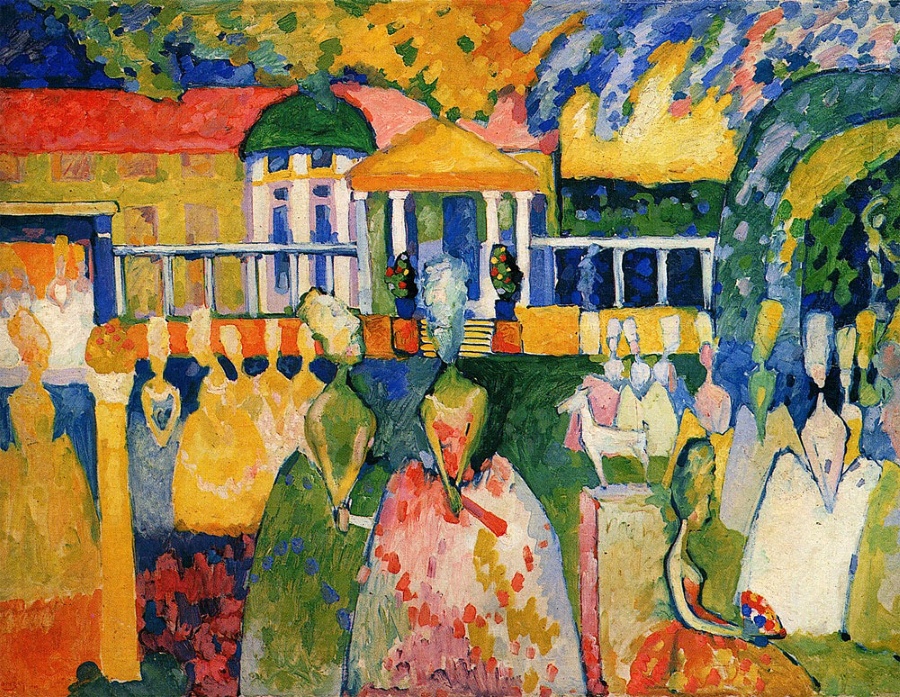 Ladies in Crinolines by Wassily Kandinsky, 1909
Ladies in Crinolines by Wassily Kandinsky, 1909In 1908, Kandinsky and his wife moved to the small Bavarian town of Murnau. The next 6 years living there were the most productive of his life. Here Kandinsky created his first series of paintings that stated the main principles of abstractionism and formed the movement's ideas. The works of this period are based on color dissonances, play of lines and spots which gradually displaced images of real reality in his works. It is noticeable in the works ‘Ladies in Crinolines’(1909, The State Tretyakov Gallery, Moscow) and ‘Landscape near Murnau with a Locomotive’ (1909, Solomon R. Guggenheim Museum, New York).
Throughout his life, Kandinsky wrote several theoretical works. Three of these became the basis of the abstractionist theory: ‘On the Spiritual in Art’ (1911), ‘Text by the artist. Steps’ (1918), ‘Point and Line on a Plane’ (1926) in which he formulates the theoretical premises of his own creativity and abstract art in general. To this day these works remain one of the most important keys to understanding the art of the 20th century.
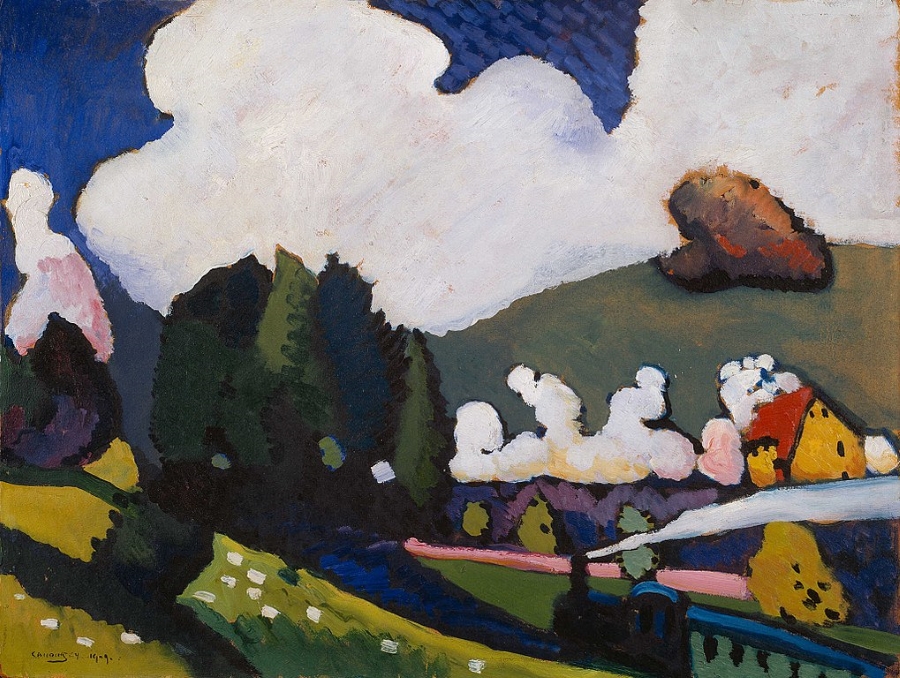 Landscape near Murnau with a Locomotive by Wassily Kandinsky, 1909
Landscape near Murnau with a Locomotive by Wassily Kandinsky, 1909In Murnau Kandinsky wrote ‘Concerning the Spiritual in Art’ (1911) where he formed his ideas related to fine art, the psycho power of pure colour and the relation between fine art and music. In this work he draws an analogy between abstract painting and music, noting:
Music was for several centuries an art that devoted itself not to the reproduction of natural phenomena, but rather to the expression of the artist’s soul in musical sound.
In ‘Point and Line on a Plane’ Kandinsky studied the interaction between nature, arts and humans while ‘Point and Line on a Plane’ Kandinsky strives to create a ‘Dictionary of Elements’, which, in his opinion, should lead to the substantiation of the ‘grammar’ of the pictorial language.
Key works and artistic techniques
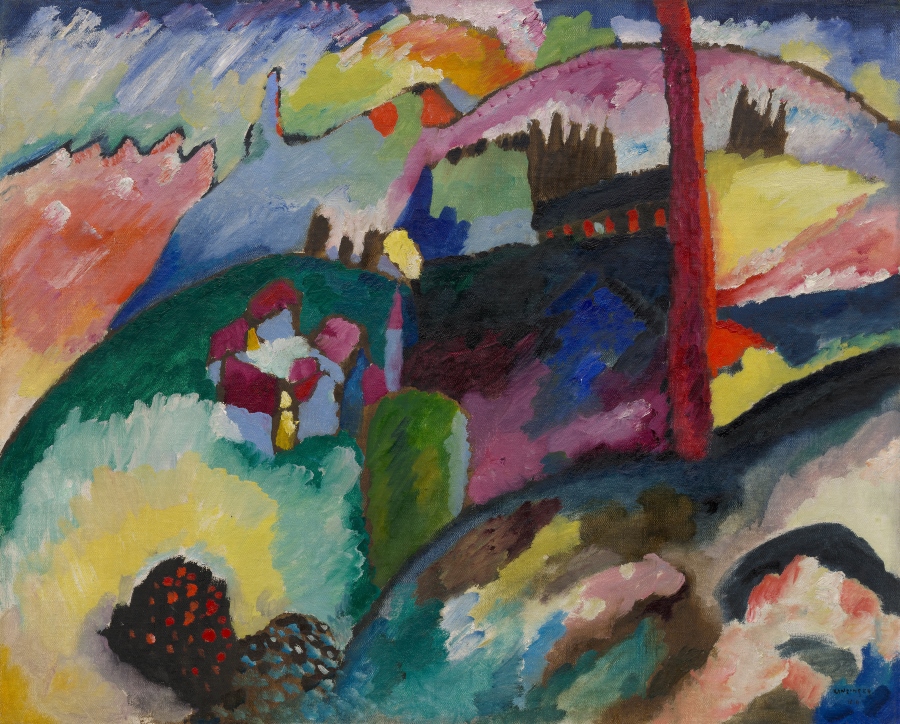 Landscape with Factory Chimney by Wassily Kandinsky, 1910
Landscape with Factory Chimney by Wassily Kandinsky, 1910The theory of colour perception formulated in Kandinsky’s theoretical works shows that colour affects a person, and the impression is not only visual. Paint, like music, can evoke a response from all senses. The artist himself recalled that even as a child saying that he heard a certain hissing sound when mixing paints on a palette. He believed that the spiritual and bodily in a person are closely connected, and because of this connection, a strong emotional experience (for example, when listening to music) may cause another kind of corresponding experience (visual associations) – and this is a manifestation of synesthesia.
Interest in synesthesia and fascination with Goethe's ideas led Kandinsky to think about musical parabolas, as well as to comprehend the associations that arise when listening to music. For example, for the artist, black was the soundlessness of ‘eternal silence without future and hope’, while white was the sound of a pause promising continuation.
The sound of colour is so precise that it would be difficult to find a person who would try to express the impression of bright yellow in the bass notes of a piano or madder in the form of a soprano voice.
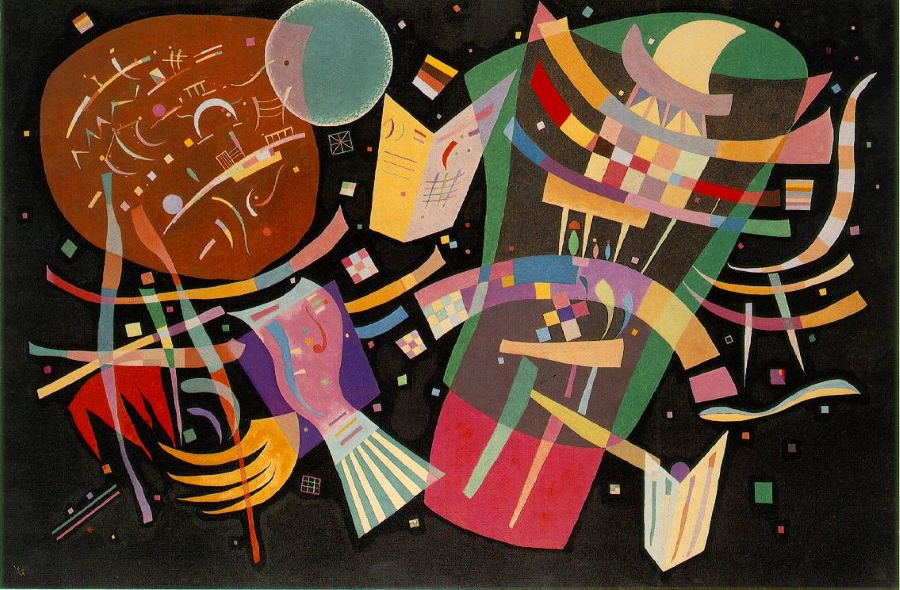 Composition X by Wassily Kandinsky, 1929
Composition X by Wassily Kandinsky, 1929Color theory has in many ways become a breakthrough into the future for artists and architects. It turned out that a circle and a square have different effects. Shape and color influence each other, changing meanings, and placing accents in new ways. The characteristics of colours also matter: warm or cold; light or dark. Kandinsky, in his theory of colour psychology, calls this ‘sounds of paint’.
It is easy to notice that Kandinsky borrowed the names of many of his paintings from musical terminology. And this is no coincidence - polyphony is hidden in the artist’s works, which viewers perceive as ‘colour’ chords.
Kandinsky’s enduring legacy
Wassily Kandinsky died on December 13, 1944, from arteriosclerosis (cerebral haemorrhage). He managed to see the liberation of France by the Allies in September, and in November his last lifetime exhibition was opened. As often happened with artists, he was appreciated only after his death. Today his works can be found in the leading museums of the world: the Guggenheim Museum, the Georges Pompidou Center, the State Tretyakov Gallery, the Lenbachhaus Gallery, etc.
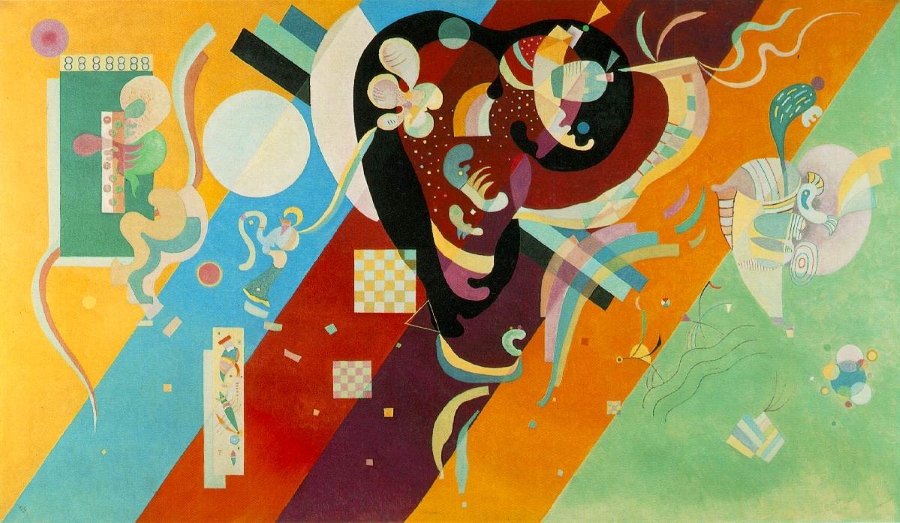 Composition IX by Wassily Kandinsky, 1936
Composition IX by Wassily Kandinsky, 1936Kandinsky is one of the ten most expensive artists on the planet. In 2006, his ‘Lake Sunberg’ was sold at Sotheby’s for $9 million, and a year later his work ‘White Sound’ was auctioned for $23.3 million.
If you’re looking to read more from us, check out Wagner's opera as an anti-war manifesto.
Photo Credits: © Wikipedia Commons.
